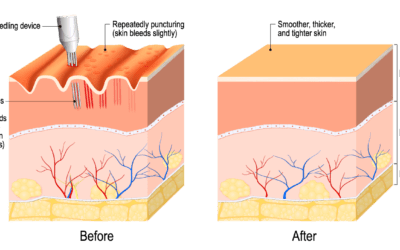Microneedling For Cellulite? Not Likely.
Last updated on September 17th, 2019

One of the challenges for patients and doctors alike is dealing with treatment modalities, methods by which one may attack a medical problem. What works and what doesn’t, what is good for one thing but not great for another, is the issue at hand. In the realm of aesthetic medicine, where so much money is involved, this problem is especially rampant. The Internet is filled with devices, creams, and more—for use in the doctor’s office or at home—which claim to be the solution for any particular cosmetic concern.
Microneedling is a powerful, yet simple and low risk treatment option. In some cases it does things other devices just can’t do, and in many cases it provides a more tolerable, less risky alternative with minimal downtime. For a growing list of common cosmetic applications, microneedling is proving useful. Stretch marks, acne scars, and general facial rejuvenation, among other things, can be successfully treated with approved microneedle devices that are safe and used by trained operators.
What it can’t do is treat cellulite, that dimply, cottage cheesy appearance in fatty areas of the body, particularly in women. Nobody wants cellulite, everyone wants it gone, and reliable treatment is hard to find. While some promising options are emerging, microneedling isn’t one of them. Why?
Cellulite occurs because the fibrous connective tissue (fibrous septae) tethering the skin to tissues beneath it creates compartments of fat; uneven filling of these compartments causes some to bulge, causing a rippling, dimpled appearance on the surface, and the fibrous tethers don’t stretch adequately or uniformly. Coupled with issues with the quality of the skin above those areas such as the thighs, buttocks, and upper arms, the overall effect isn’t pretty. The reasons behind this aren’t fully understood but hormones and genetics are believed to play strong roles. Also, the fibrous septae in men tend to run diagonally, which doesn’t so easily contribute to the cellulitic appearance; those same bands of tissue in women run vertically.
There are two schools of thought about the how and why of treating cellulite. Healthier diet, exercise, and improved water consumption are commonly believed to be helpful no matter what method of treatment is recommended. Some believe that you must remove the fat and tighten the skin above to smooth things out, a one-two punch involving modalities to melt (or suck out) fat and those that help loose skin to contract. Others believe the buildup of toxins and other unwanted material in the fat is a big contributor, that reduced microcirculation fails to keep these areas well-maintained and smooth in appearance. From this angle, the problem is attacked through heat and massage.
Microneedling does none of these things. Safe, effective devices do not penetrate deeply enough to affect the deeper tissues, and treatment of the skin alone won’t do the trick. So be wary of anyone who claims to treat cellulite successfully via microneedling. Chances are, it’s not going to lead to the kind of outcome the average person is hoping for.
micro needling cellulite or microneedling cellulite
Find certified Dermapen microneedling professionals
Dermapen® Microneedling Devices are exclusively sold to Medical and Skin Care Professionals. Use the form to the right to get started finding a Certified Dermapen® practitioner in your area.
Enter your location information to find a Dermapen Skin Care Professional.
Error: Contact form not found.
Want to become a Dermapen Practitioner?
Medical Clinics and Spas can offer their patients the worlds most advanced microneedling treatments with Dermapen
Microneedling Treatments
The Dermapen Microneedling Pen provides an unparalleled response through the segmented delivery of microneedles, creating micro injuries to the epidermis (outer layer of skin) and dermis (the inner layer of skin). As a result, the micro injuries encourage the body’s innate ability to repair itself.
Every Dermapen tip is outfitted with 12 needles and features our patented technologies, which include SureSpace™ and SafLok™. Accordingly, these safety enhancements can be found in every Dermapen needle tip and pen.
Furthermore, by using SureSpace™ and SafLok™ microneedling pen technologies, practitioners can deliver their patients the safest microneedling treatment possible, while getting the best microneedling results for their patients.


